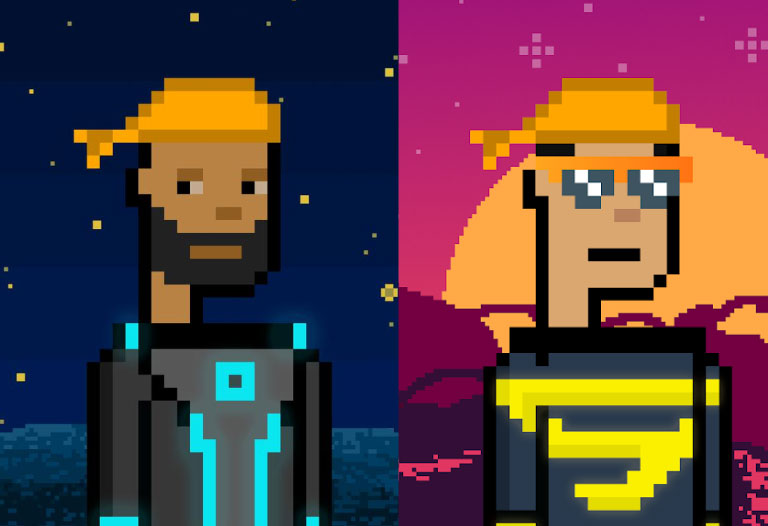
Table of Contents
ToggleIt is likely that when we hear the acronym NFT, the first thing we think of is CryptoPunk or BoredApe. For this reason, the phrase “staking of NFTs” may sound strange.
The overuse of NFTs as representations of images on the blockchain has led us to set aside the notion that an NFT is a token and as such, we can give it greater utilities than simply buying and selling it.
Today, overtaken by the echoes of a new crypto-trend, I will analyze what is the staking of NFTs, while reviewing some basic concepts and providing “tangible” examples.
How does NFT staking work?
The staking of NFTs refers to the act of depositing our NFTs in a smart contract, deployed on the blockchain with which we are interacting, in exchange for the promise of receiving a reward in return.
For those who have some experience in the blockchain world, they will notice that this is an action that they perform on a daily basis. The only difference, in this case, is the object of staking.
When staking, we generally deposit our cryptocurrencies or tokens in a smart contract in exchange for a reward. But NFTs, being tokens, not fungible, but tokens nonetheless, are susceptible to this type of utility.
Before continuing with the idea, I will take a brief pause, to explain what I mean when I talk about “staking”.
What does “staking” mean?
The overwhelming speed of the crypto ecosystem forces us to grasp concepts and make them our own, sometimes without time to interpret them.
In the crypto world, the concept of staking comes from one of the most successful mechanisms to achieve consensus in blockchains. The Proof of Stake consensus determines that in order to be a validator of the network, you must “stake” or “block” your cryptocurrencies as a guarantee of your good behavior. In return, you will receive rewards for signing a block or be penalized if your behavior is not as expected.
From that primordial use, the concept has been extended, reaching at this point of the “crypto-evolution” to be a synonym for the deposit of cryptocurrencies or tokens, in exchange for a reward.
We can from here, extend by logical reasoning, that the same will happen with our NFT. We will deposit the same in a smart contract and in return we will receive rewards.
The interesting thing is to find out where the rewards come from. Undoubtedly, the answer will be closely related to the particularities of each project.
NFTs and their versatility
It is important to remember that this acronym, reiterated on the verge of exhaustion, stands for “Non Fungible Token” or, in Spanish, “Token No Fungible”. Its characteristic of “non fungibility” is given by its unique and unrepeatable character.
An NFT could not be exchanged, without extra considerations, as a bitcoin can be. What would be the problem of exchanging a BTC for an equal one, or the first ETH created, for the most recent one? No problem, both have the same value and therein lies their fungibility.
Now, when we talk about NFT, the equation is extremely different. What human being, in his right mind, would exchange the “rarest” Bored Ape for the “most common” one? My guess is no one. This is because NFTs find their value in their scarcity, uniqueness and, why not, in their rarity.
But leaving aside the subjective appreciations, and those that we can highlight closer to objectivity, regarding its price, we are talking about a token created under a standard.
The benefits of standardizing the creation of tokens
Standardization when creating NFTs has a great advantage for their later usefulness. By defining the way in which they are designed, from a programming point of view and leaving aside their “traits” or characteristics, those who design smart contracts know what to expect.
Having traveled this road, which we have briefly retraced, we arrive at our current reality. In it we find, more and more frequently, projects that allow us to “stake”, deposit or block our NFTs in a smart contract, to receive a reward in return.
In order to give a better context to this explanation, I will give some “tangible” examples in the next section.

Some examples of NFT staking
Good ideas spread with meteoric speed, running the risk of mechanical and meaningless repetition. Anyway, the idea of staking NFTs reached different projects or collections of them and here we review some of the most renowned ones.
Bored Ape Yacht Club
When we mention these dull-faced monkeys, we are talking about the most successful NFT collection, to date, in our “crypto-history”. Dethroning the avant-garde CryptoPunks, the Bored Apes are priced above any other NFT ever created.
Its success led the team behind its creation to develop a DAO to organize and make decisions concerning the community that has been generated behind these images. Unsurprisingly, this DAO has its own governance token.
Those who possess this token can participate in the voting and benefits of this DAO. One of the ways to get hold of this token, intended for the lucky holders of a Bored Ape, is to “stake” or “lock” their NFT in a contract in exchange for the APE token. The circle of the “Apes” closes on itself, in a magnificent way.
Wulfz
Here the issue is related to a game, hosted on the Ethereum blockchain. These cute wolves, can be “staked” or deposited on the platform created for this purpose and in return receive the AWOO token.
Unlike the previous example, these AWOO tokens have no use outside the Wulfz platform. So where is the point of depositing our “lobitos” in exchange for about 10 AWOO per day? In the utility they have within the platform, of course.
By getting enough of them, we will be able to use them to acquire more NFTs from this collection. As always, these NFTs can be deposited on the platform or monetized in the various secondary markets that exist, in a network that has the highest volume of NFT transactions.
Galactic Punks
We leave the Ethereum network, to land on Terra. This blockchain, has a collection of NFTs that we could highlight as its flagship.
The Galactic Punks, found their inspiration in the CryptoPunks, but with a design that we can notice substantially different, have earned an important place in the ecosystem.
Destined, perhaps even before they were born, to be a “Blue Chip” project, they continue to advance in their “roadmap” and fulfill their promises. Initially, with the proceeds from sales, they set up their own validator on the blockchain.
Subsequently, they gave birth to a DAO, to which each of the holders of a Galactic Punk belong. This DAO, by means of voting of its members, is in charge of deciding the destination of the profits obtained with the validator.
Different investments have been made, on protocols of the network itself. Today, in order to get the share that the DAO decides that corresponds to each owner of a Punk, it is necessary to stake it in a contract. This task is carried out by depositing each NFT inside a “virtual cryogenic chamber”. After 21 days, the rewards can be withdrawn. Gamification adds a fun token to business.

What to expect from NFTs
It is more than evident, if we pay attention to the “crypto-voices” that make themselves felt in the various social networks that contain their presences, that the next step is the use of NFTs as loan collateral.
More than one project or daring entrepreneur has been encouraged to suggest this idea, but so far we do not have a platform that has successfully implemented this solution so acclaimed by the community.
Undoubtedly, this request raises many questions, especially those related to how to value the NFT that would be delivered as collateral in exchange for the withdrawal of the loan.
Just thinking about it generates a certain vertigo, the level of manipulation that a collection of NFTs could undergo, by large capitals, seeking to benefit from liquidations in the platforms that dare to take the first step.
We are far from having found a winning solution or proposal in this regard. The challenge has been posed and cryptocurrencies are on the way to its resolution.
Final thoughts
Just a few months ago, in his first tweet of the year, Vitalik sentenced that the Ethereum white paper predicted the existence or creation of the DeFi ecosystem, but not the NFTs.
Considering that one of the most amazing minds of our time was not able to predict the use of the tool he helped co-create, how could we dare to predict the use that, in just a few years, NFTs will have?
Perhaps therein lies much of the magic of our world. We can do it, and for free. The thought of how far we will take the utility of NFTs places us in scenarios that not even the best science fiction movies were able to reproduce.







